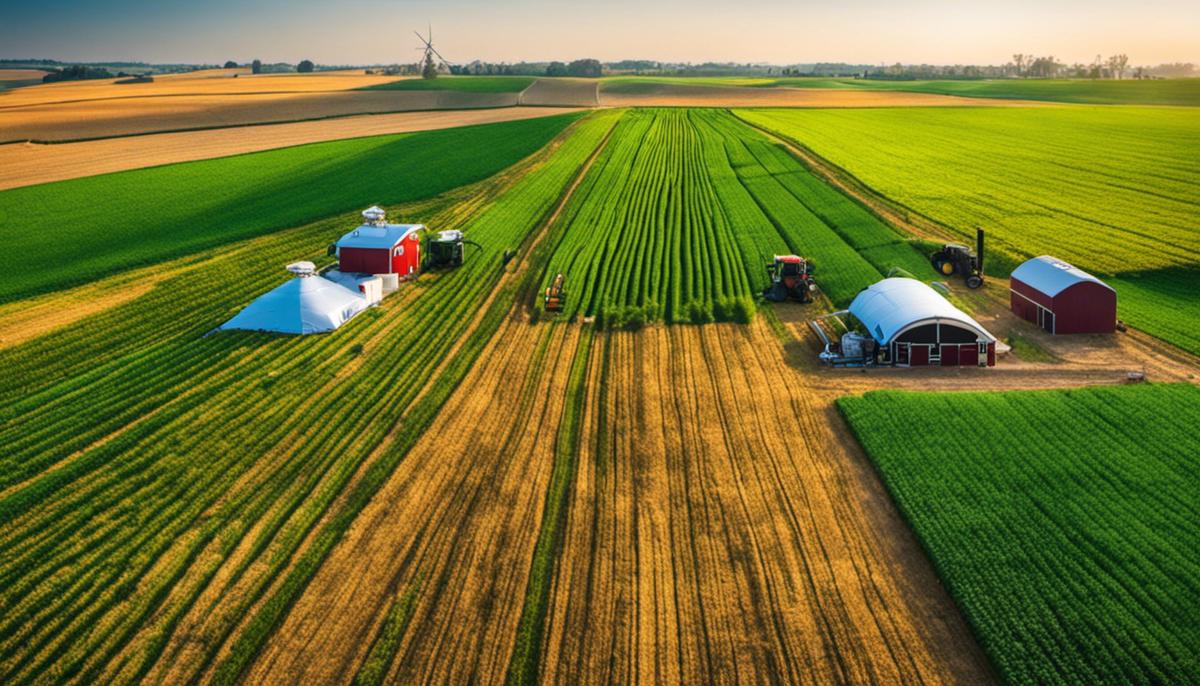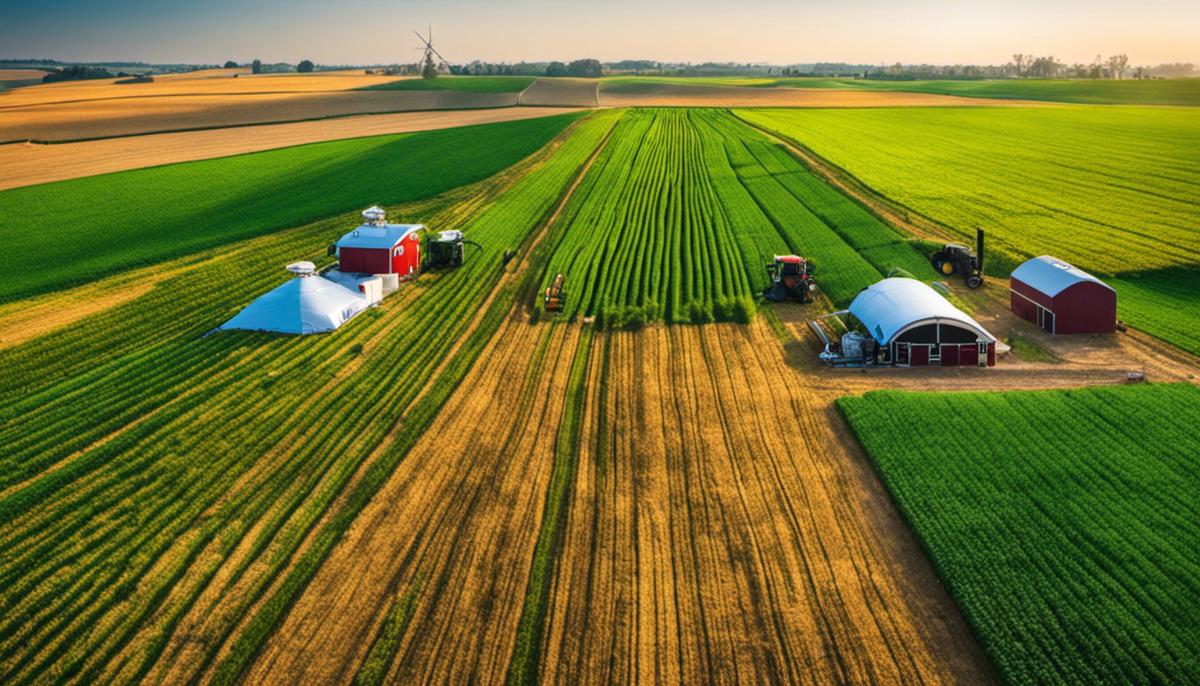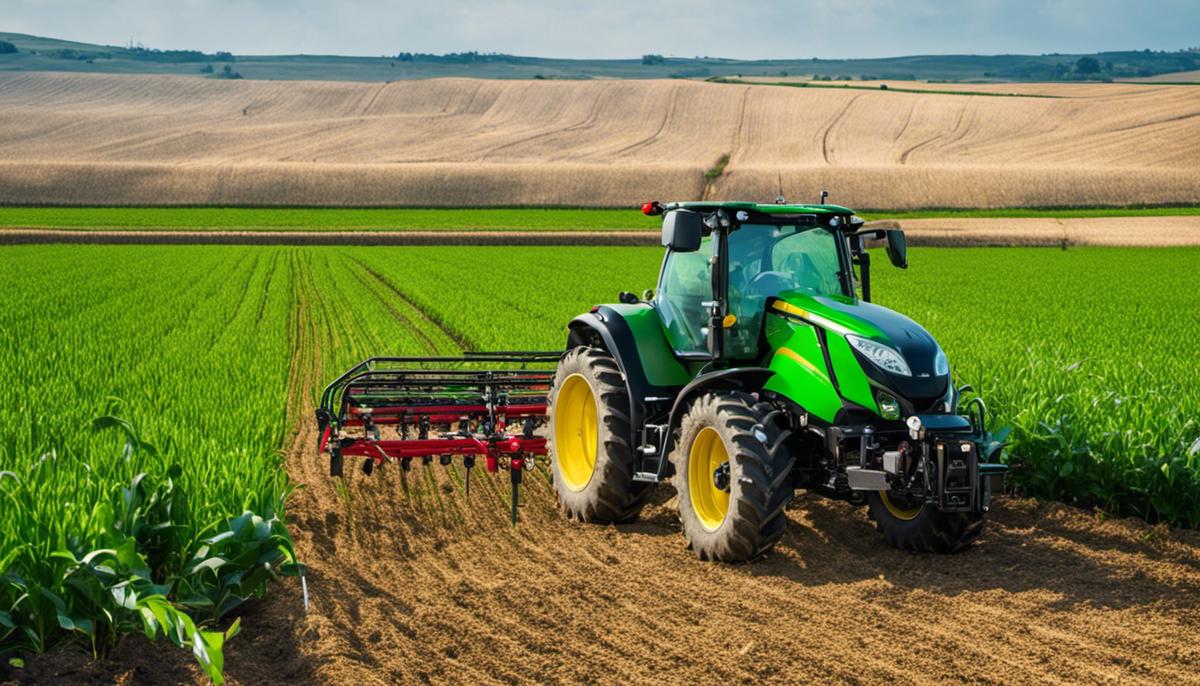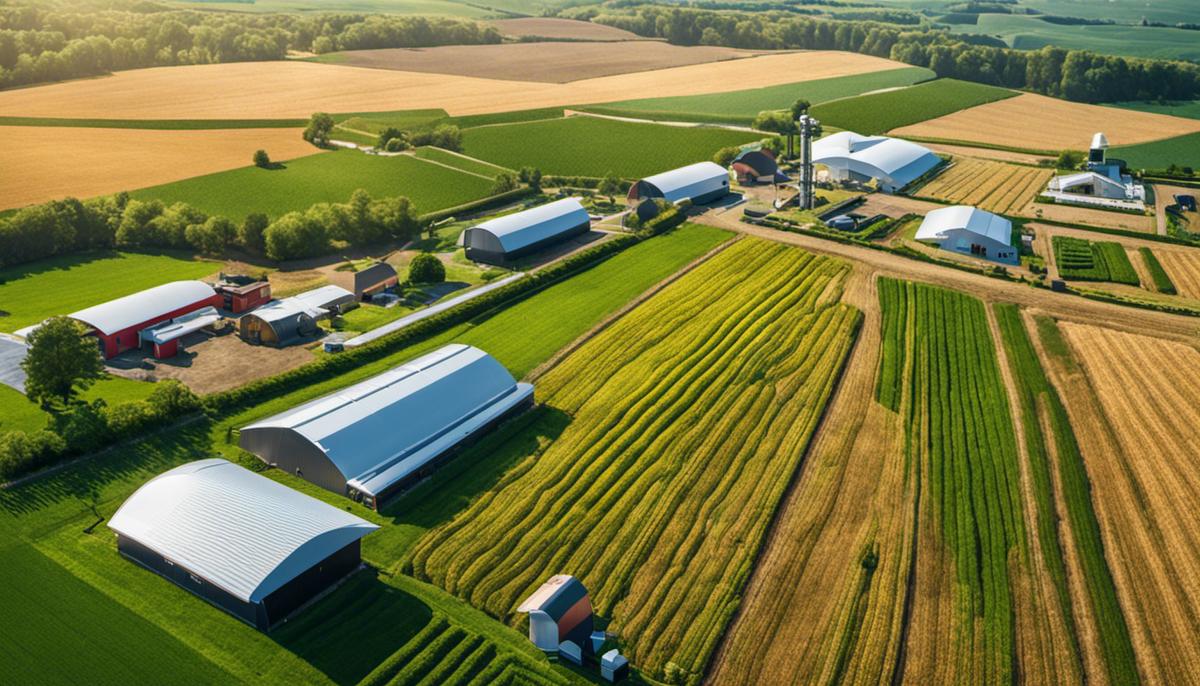
What is the precision agriculture?
Description: In the burgeoning landscape of modern farming, Precision Agriculture has surfaced as a groundbreaking approach towards sustainable and profitable farming. It intertwines advanced technological innovations with traditional agriculture practices to impeccably optimize the efficiency and productivity of farms. This technological revolution saves not only resources but also drives the betterment of farmers’ economic position while considering the environmental impact. The aim of this exploration is to shed light on a detailed understanding of the concepts and benefits of precision agriculture, the technological tools that aid its application, the challenges impeding its full implementation, and the future aspirations of this progressive method of farming. Title: Precision Agriculture: An Innovative Paradigm for Sustainable Farming Precision agriculture is often lauded as a revolutionary approach in farm management, transforming agriculture into a high-tech, data-driven, and scrupulously efficient industry. But what are the fundamental principles that underpin this innovative farming methodology and the inherent benefits it offers? The cornerstone of precision agriculture is the application of Information and Communication Technology (ICT) in the field of agriculture. The industry now employs a myriad of modern technologies like Global Navigation Satellite Systems (GNSS), Geographic Information Systems (GIS), remote sensing, and Internet of Things (IoT) devices. Furthermore, precision agriculture makes extensive use of data analytics, artificial intelligence, and machine learning techniques, augmenting informed decision-making processes. A rigorous understanding of spatial variability is paramount to the application of precision agriculture. A farmer's field is not an evenly distributed canvas; rather, it exhibits significant heterogeneity. Different zones within a field may display starkly diverse soil characteristics, microclimate conditions, and crop health statuses. By employing geostatistical models, farmers can map and recognize this spatial variability, then manage it effectively. Adopting site-specific management (SSM) is another underpinning concept of precision agriculture. The inherent heterogeneity of a field necessitates a tailored approach instead of the blanket application of resources. By integrating technological tools and spatial variability data, SSM facilitates the application of resources, such as fertilizer, water, and pesticides, targeted at specific field zones, maximizing output while minimizing waste. Precision agriculture, substantially driven by data, relies heavily on a continuous loop of feedback and adaptation. Observation, measurement, and response form a crucial cycle that allows farmers to monitor crop growth, detect anomalies, undertake corrective actions, and continually fine-tune their farming practices. In terms of inherent benefits, precision agriculture fosters enhanced productivity by optimizing resource utilization. By pinpointing deployment on need-based zones, farmers can increase yield and reduce superfluous expenditure. The practice plays a crucial role in mitigating environmental impact by curbing indiscriminate usage of fertilizers and pesticides, contributing to a sustainable agricultural model. The transformative potential of precision agriculture also extends to farm labor. Automated machinery and drones, guided by GPS navigation, can perform labor-intensive tasks, significantly reducing human labor needs while increasing operational efficiency. Moreover, value addition arises from risk reduction. This innovative farming methodology leverages the power of IoT devices, data visualization, and predictive analytics to give farmers foresight, allowing them to anticipate disease outbreaks, pests, or unfavorable weather conditions, and act proactively. In essence, precision agriculture intertwines the profound insights of agronomy with the transformative impact of cutting-edge technology, redefining the approach toward farming. It is the harbinger of sustainable agriculture, the beacon that illuminates the path toward optimal resource utilization, and the catalyst for yielding maximum returns, economically, environmentally, and socially. Advancing the formidable notion of precision agriculture, various leading-edge tools and technologies are rendering indispensable aid to this innovative method of farming. Yet, expansion into this sector would be unthinkable and implausible without two key enablers - Drones and Sensors. Unmanned Aerial Vehicles (UAVs), colloquially known as drones, enable a bird's-eye view of the farms. High-resolution images obtained from drone technology enable farmers to monitor crop health, identify stress locations, and gauge nutrient requirements. Drones provide farmers with close to real-time data, rendering speed and accuracy as its greatest strengths. Furthermore, drones outfitted with multispectral, hyperspectral, and thermal sensors advance the precision agriculture industry by providing nuanced data on absorption rates or leaf temperature, thereby amplifying the ability to make proactive decisions on plant health management. The efficiency of precision agriculture is inextricably linked to sensor technology as well. Sensors are fundamental in transforming raw agricultural data into insightful knowledge. Soil moisture and temperature, humidity, salinity, pH, and other pertinent data points are gathered by sensors. This not only aids in making informed decisions, but also catapults the move towards automated farming. Stemming out of sensor technology, Variable Rate Technology (VRT) and telemetry are paramount in bolstering precision agricultural pursuits. VRT allows farmers to apply necessary elements like fertilizers, pesticides, or irrigation at differing intensities, tailored to specific zones of the field. It breaks away from the conventional 'one size fits all' approach, leading to resource optimization and maximized yields. Telemetry, a branch of ICT, equips farmers with the ability to remotely control and monitor machinery, meteorological conditions, and other farm equipment. Real-time data capture, relay, and analysis made possible through Telemetry allow farmers to make reactive changes to unpredictable situations. In the realm of resource administration, Irrigation Management Systems (IMS) are rendering substantial aid. These digitally enhanced systems utilize detailed weather forecasts, soil conditions, and crop information to advise on optimal watering schedules. Thus, guaranteeing efficient usage of vital resources, and ensuring sustainable practices. Last but not least, predictive tools enabled by Machine Learning and Artificial Intelligence have the potential to uproot conventional agricultural practices, driving them into a technologically intelligent future. Predictive analytics can forecast disease pressure, pest invasion, crop yield, and other varying scenarios, abetting farmers to strategize and build resilience. Invariably, the tools and technologies described are collectively leading the innovative journey in precision agriculture, creating an attainable vision of sustainability and amplified productivity. The combination of these technologies and further advancements continue to enrich the practice of precision agriculture, promising a fruitful future rife with possibilities. A near-perfect amalgamation of technology and agriculture, Precision Agriculture (PA), promises an exponential renewal. However, the journey to full-scale adoption is beset by obstacles. The main issue is the high cost of adoption. The expenditure involved in acquiring the necessary technology for precision agriculture can be prohibitive, especially for small and medium-sized farms. In addition, connecting devices, data analysis software, and training farmer populations to use these new tools also constitute a significant financial burden. Another challenge is the absence of a standardized data management system. These specialized farm practices generate a deluge of data that must be processed and analyzed for decision-making. Presently, the market lacks a streamlined framework for seamless data integration, sharing, and protection, slowing the adoption process. Amplifying these battles is the digital divide, accentuated by discrepancies in Internet access, particularly in remote rural regions where farming is predominant. This lack of connectivity impedes the real-time transmission of data and cripples the efficacy of ICT-driven farm operations. Furthermore, regulatory frameworks and policies haven’t yet caught up with the rapid pace of technological advancements in precision agriculture, causing ambiguity and reluctance in its adoption. Of particular concern are the regulations surrounding the use of drones, certain sensor technologies, and data privacy norms. Finally, there are concerns about the consolidation of power in agriculture. As the agriculture technology market becomes dominated by a handful of large corporations, smallholder farmers may find it difficult to participate in this modern farming revolution, leading to wider economic and social inequalities. While these challenges present considerable barriers, the future of precision agriculture bristles with potential. Breakthroughs in robotics and automated machinery should lower costs and smoothen the integration process. Aerial drones coupled with advanced sensors will enhance crop and soil monitoring, offering granular insights into the agricultural ecosystem. In tandem, edge computing and decentralized networks can overcome the problem of connectivity and data processing in remote locales. As AI and machine learning evolve, we can foresee a more intuitive, predictive precision agriculture that can preempt threats and optimize results with minimal human intervention. Moreover, as research continues to unfold the potential of multi-crop farming through precision agriculture, it offers a path towards enhanced biodiversity and ecosystem resilience. The evolution of blockchain technology could also disrupt traditional agricultural markets and distribution systems, connecting smallholder producers directly to consumers, thereby diminishing socio-economic inequities. Another promising area is the integration of precision agriculture with regenerative practices, offering significant potentials to enhance not just productivity, but also soil health and climate resilience. Therefore, even in the face of ascending hurdles, the vision of a greener and sustainable agricultural system fostered by precision agriculture remains well within grasp. Exploring, piloting, and scaling solutions for these challenges lies at the heart of the current discourse around precision agriculture. Rapid technological advances, coupled with dynamic policy contexts, should provide fertile ground for the continued evolution of this transformative approach to farming. As we march towards an age of agricultural modernity, the pivotal role of precision agriculture becomes even more evident. Leveraging technology for increased sustainability and farm productivity isn't just a passing trend, but a necessity for coping with the mounting global food demand. It's a synergistic blend of technology and agriculture, remodeled to confront its challenges and sculpt our agricultural future to become more resilient, sustainable, and efficient. While there might be hurdles to overcome in this path, the powerful combination of technology and insights guarantees a promising future for precision agriculture.Concepts and Benefits of Precision Agriculture

Technology and Tools of Precision Agriculture

Challenges and Future of Precision Agriculture
